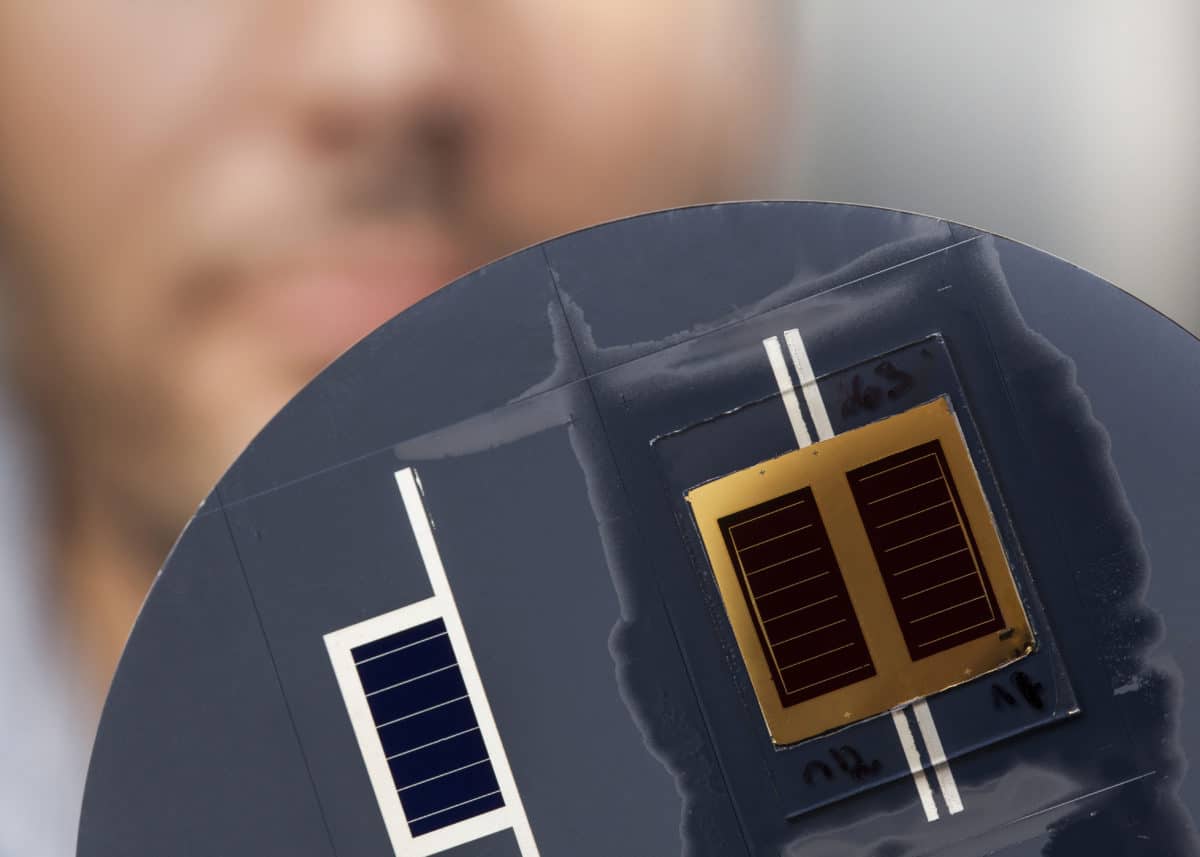A team of researchers from three leading institutes in Switzerland and the United States is leading the way on developing higher PV cell efficiencies. These researchers from the U.S. Department of Energy’s National Renewable Energy Laboratories (NREL), the Swiss Center for Electronics and Microtechnology (CSEM) and the École Polytechnique Fédérale de Lausanne (EPFL) have been testing a variety of materials based on III-V elements, in stacked, tandem configurations with silicon bottom cells.
As their latest progress a dual-junction solar cell, combining an NREL-engineered gallium arsenide (GaAs) top cell and a silicon heterojunction cell developed by CSEM, was measured at 32.8%, while a triple junction cell also incorporating a layer of indium gallium phosphate (GaInP) achieved 35.9% efficiency.
Efficiency of 32.8% represents a new record high for dual-junction III-V/Si solar cells, breaking the same research group’s previous record of 29.8% set in 2016. “This achievement is significant because it shows, for the first time, that silicon based tandem cells can provide efficiencies competing with more expensive multi-junction cells consisting entirely of III-V materials,” says NREL scientist Adele Tamboli. “It opens the door to develop entirely new multi-junction solar cell materials and architectures.”
Tandem cells are a popular area of research in PV, thanks to their potential to push higher efficiencies without forcing the industry to move away from silicon solar cells, where enormous cost reductions have been achieved in recent years.
While impressive, these cells are far from being financially viable – NREL estimates a cost per watt of $4.85 for the GaInP cell, and $7.15 for the GaAs cell, based on 30% efficiency. The scientists estimate, however, that by adjusting to 35% efficiency and incorporating savings from economies of scale that could be achieved through ramping up production, the cost per watt could quickly be reduced to below $1/W. “Such a precipitous price drop is not unprecedented,” notes NREL. “For instance, the cost of Chinese made PV modules fell from $4.50/W in 2006 to $1/W in 2011.”
NREL goes on to note that, if costs for a III-V solar cell cannot be brought down to these levels, then cheaper materials will need to be sought. The researchers still stress though, that this breakthrough serves as proof of concept for the use of silicon cells in tandem with other high efficiency materials, and the researchers mention that CSEM is also studying the use of perovskite to optimize solar’s cost/efficiency ratio.
“These records show that combining crystalline silicon and other materials is the way forward if we are to improve solar power’s cost/efficiency ratio,” states Christophe Ballif, Director of CSEM’s PV-center. “It affirms that silicon HJT solar cells, when integrated into the structure that we’ve developed, can generate multi-junction cell conversion efficiencies over 32%.”
This content is protected by copyright and may not be reused. If you want to cooperate with us and would like to reuse some of our content, please contact: editors@pv-magazine.com.









Good news to know that Fantastic developments being achieved by Swiss & US scientists to get high efficiency PV modules at affordable price…that is below 1 USD.
CONGRATS TO ALL SCIENTISTS OF SWISS & US for developing high efficiency PV cells.